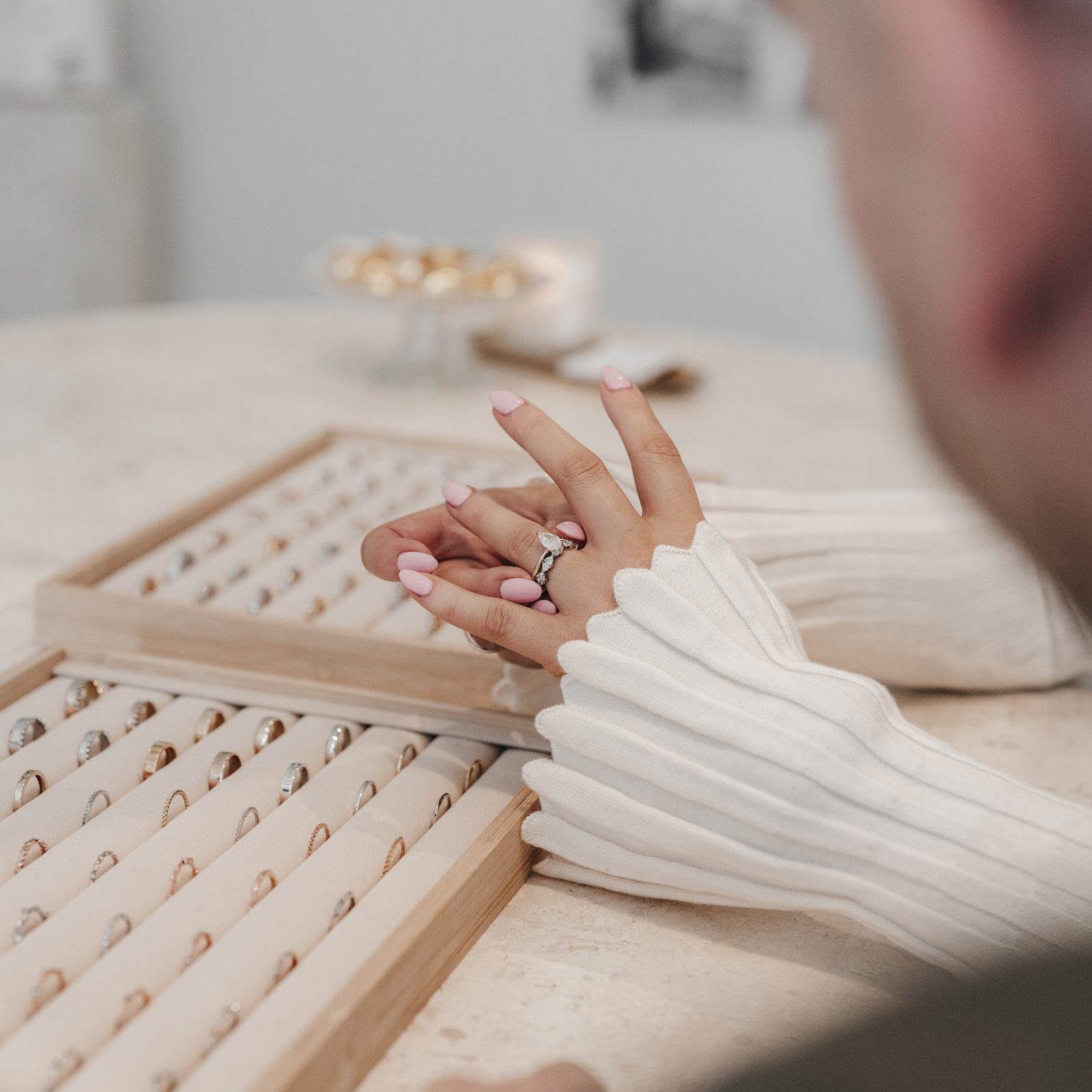
DIAMOND EDUCATION: CARAT WEIGHT & RATIOS
 When it comes to learning all about diamonds, there can oftentimes be so much information, that it is simply overwhelming, especially if the world of jewellery is new to you.
When it comes to learning all about diamonds, there can oftentimes be so much information, that it is simply overwhelming, especially if the world of jewellery is new to you.
This is where we step in, as diamond and jewellery experts, to guide you on your custom design journey. It is our role to ensure you not only have a better understanding of diamonds and the value they hold, but are aware of other important factors, such as how we source our colourless diamonds, the quality of grading we follow, and what we look for when considering carat weight options.
Many people believe that if a diamond is a certain carat weight, it will look identical in size to another diamond of the same weight, but this is not always the case. Fancy cut diamonds, especially, can vary in size depending on where the weight of the diamond is distributed. Examples of this are discussed further down.
That said, we will always guide you toward the average measurements of a diamond in your preferred carat weight when trying on options in the studio, so you are able to visualise and envision how your engagement ring will come together!
Have a look at the measurements in some of our most popular diamond shapes, below, to see how they vary in size when going up in carat weight.



 DID YOU KNOW...
DID YOU KNOW...
Some diamonds may hold more weight in the bottom, which is classified as its 'depth', while other diamonds can be long and thin, or short and wide. It really is based on preference, as well as availability, and our expert design opinion, when sourcing a diamond. This description all falls under 'ratios'.

Diamond ratio is the length-to-width ratio, which is calculated by dividing the length of the diamond by its width. There are a number of common ratio options to consider when sourcing a diamond, which can vary based on shape.
For example, a cushion cut diamond can be found with a ratio of 1.0, meaning it's perfectly symmetrical, or it can be found with a ratio of 1.3, which tells us it's elongated.
Diamond shapes such as marquise, pear, oval, radiant, and emerald cut, all have varying ratios, and the protocol when sourcing these diamonds is generally based on your preference, along with our expertise.
A perfect example are these 1.50ct pear diamonds, which clearly have three different measurements, but weigh the same in carat weight.

Shapes such as asscher, princess and heart are best when they have a ratio of 1.0, or as close to this as possible, as these diamond cuts are created to offer a perfectly square or symmetrical appearance. This acts as a point of difference for clients who aren't seeking an elongated diamond.
Our process when sourcing natural stones is meticulous, as we will only choose diamonds and gemstones that meet our top-quality standard. When considering a diamond, we source:
- Colourless white diamonds - D, E, & F only
- Champagne diamonds - C2, C3, & C4
- Yellow diamonds - Fancy light & above
- Clarity - SI1 and above
- Nil Fluorescence, unless a fancy colour diamond
- Cut, polish and symmetry - Very good and above
- Minimal bow-tie effect
- GIA Certified diamonds only
For our entire Cassandra Mamone team, it is always such an honour to create each clients beautiful 'forever rings', and we take great pride in ensuring quality craftsmanship, as well as expert diamond sourcing.
With a beautiful variety to try on in studio, and many stunning engagement rings, wedding bands and special pieces available to purchase online, it is never too soon to create the ring of your dreams!
Book here for your virtual or in-person consult, or click here to shop our collection.












